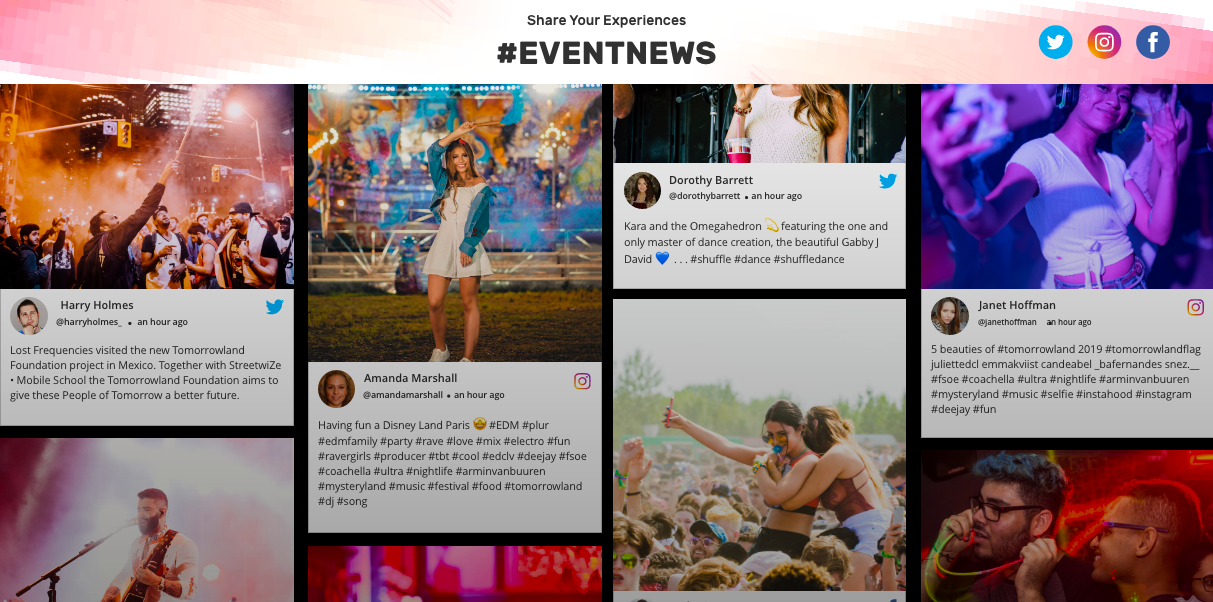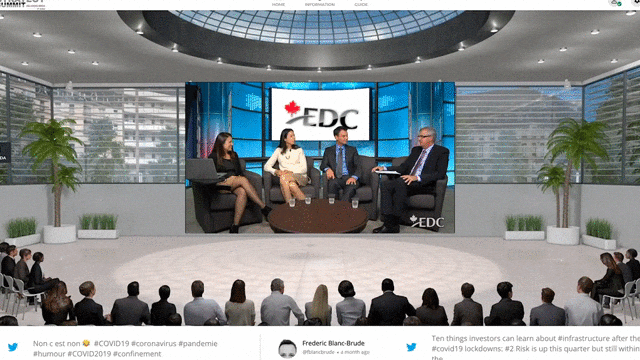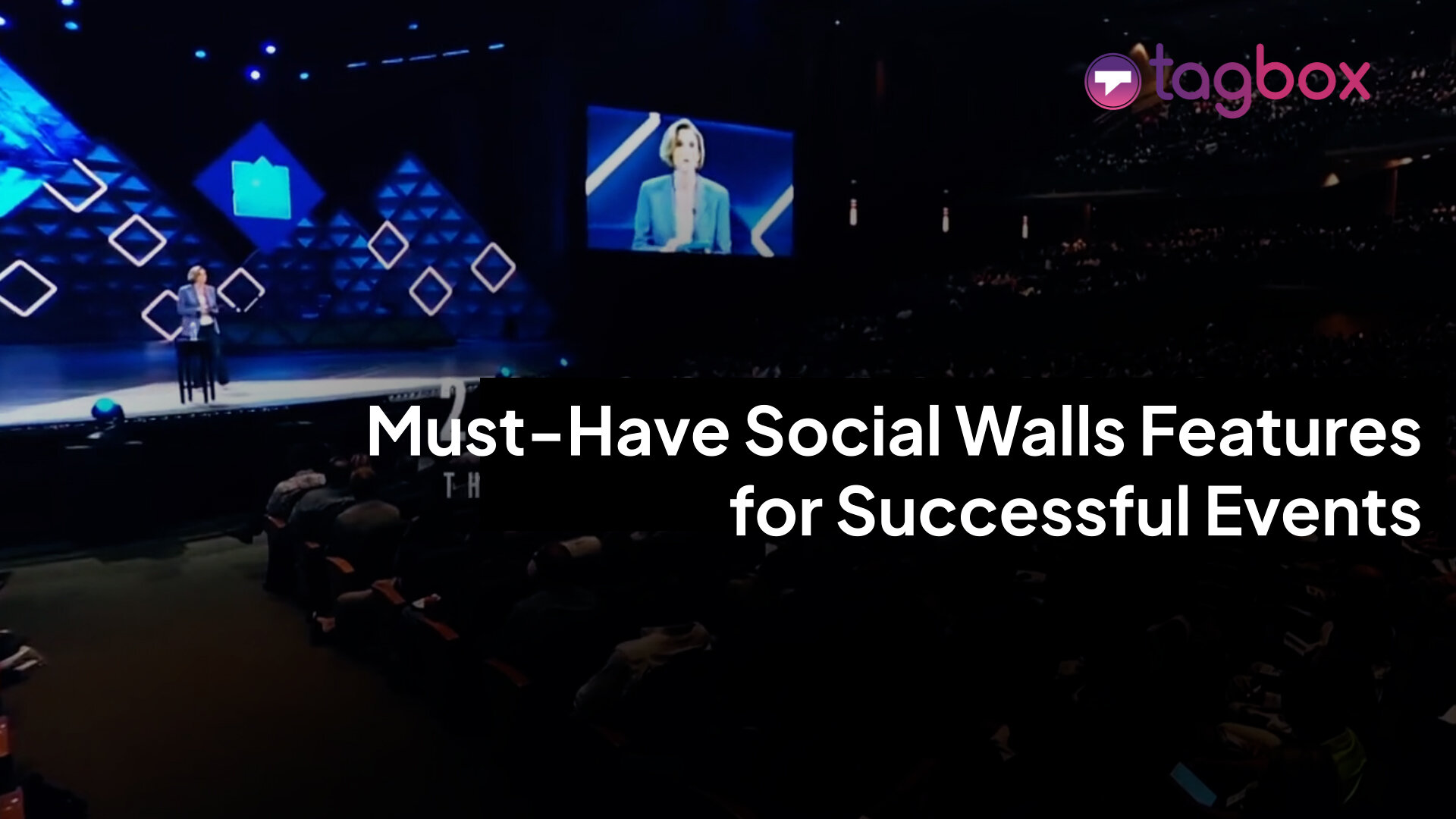Read summarized version with
From stories that sell to pictures that say it all; marketing has come a long way!
The concept of image-based marketing is not new. However, copywritten ads have run their course and cease to impact users’ minds anymore!
The age of smartphones and the accessible internet has made people brand-informed. Shoppers know what they want and rarely fall for the “the best in market” tactic. They make purchasing decisions based on reviews that come from regular customers, just like them.
As branded content started to take a back seat, the trend that came forth to brands’ rescue is User Generated Content marketing. It is where businesses indirectly employ their consumers to play cupids for brand promotions.
Meaning– content from existing users (known as user-generated content) such as images, videos, online testimonials, etc. in favor of the brand’s products and services is used to influence the new users.
User-Generated Content = “Uniquely Genuine Content”
When a user chooses to speak for products and services, it shows the level of confidence that he/she has in the brand. Consumers rely on original content from real users over pre-arranged branded sales content.
The authenticity of the user-generated content engages the audience, which is the prime motive of present-day marketing. UGC is the personalized brand experience of a consumer, which cannot be used by any of the brand’s competitors in their marketing campaigns.
The genuine and unique appeal of user-generated content, thus, makes it unparalleled in terms of brand promotions.
With users posting their reviews and feedback on social media channels, product marketing is slowly becoming smooth sailing for brands. But, only if brands know how to channel the power of user-generated content through the right mediums!
This is where Social Wall comes into the picture.
Social Wall- The Ultimate Marketing Tool
Today, the way a business communicates with its users can be a deciding factor whether it will earn a loyal consumer or lose one.
An average user spends roughly two hours daily on social media scrolling through visuals as well as engaging textual content.
Along with engagement, brands are expected to deliver customer satisfaction that their marketing gimmicks boast of. The social wall does both for new users.
A social wall is a collection of user-generated content fetched from different social media channels such as Instagram, Twitter, Facebook, etc.
The content curation for the social wall can quickly be done through UGC tools like Taggbox’s Social Walls. These tools help brands to pull content from their users’ social media profiles around dedicated hashtags.
They also take care of moderating the content so that brands could display only those consumer reviews that they want to and filter out the rest. Content moderation also decreases the chances of spamming and fake reviews about brand products.
Businesses could deploy social walls across various marketing channels and build brand reach.
Why Social Walls for Marketing?
1. Drives User Engagement
Time and again, one will find the mention of user engagement in this article. But, to begin with, why is it so important in marketing?
Here’s why-
Consumers are no longer interested in how brilliant an ad copy is! They are looking for a subtle message that they could relate to.
A social wall is nothing but a collection of beautiful stories from its brand users. It is a collage of excellent experiences that people had with the brand products.
These picture stories are what engage the brand audience, imagine if your attendees can see their names on a real-time big screen. Social Walls studio has a new feature update where you can add a Leaderboard to your event and display the best influencers and contributors.

By shifting the focus from direct marketing to user engagement, brands could deliver a message that smoothes out the buyers’ concerns about their products and services. And, that’s when the conversion magic starts to happen.
User- Engagement is not just important, it is everything in modern world marketing!
2. Builds Brand Trust Among Consumers
Social media channels like Facebook, Twitter, Instagram, Pinterest, etc. are the new-age search engines, something that brands do not realize.
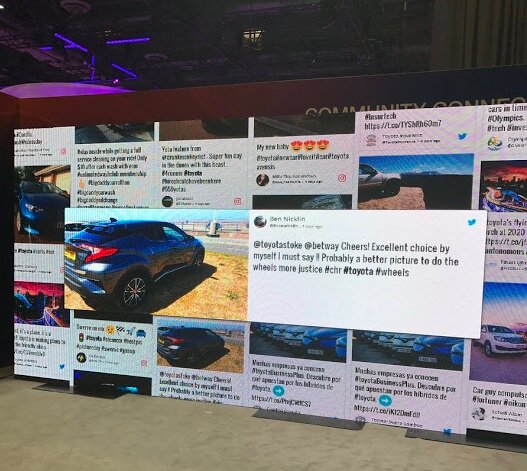
Today, customers skim through social platforms to get their hands-on product or brand reviews. This shows how much social media impacts a person’s buying psyche.
By not making full use of social media in marketing, brands can lose their chance to communicate with existing as well as new users.
Relationships are built on trust and trust cannot be made without having an engaging dialogue with the consumers. Social walls take care of the interaction factor ideally without overdoing it.
Brands can start discussions and ask for genuine feedback from their consumers and later showcase it as a social media feed.
This shows that the brand follows transparency when providing services to its users and is up for improvements. This humanizes the brand identity in which people are more likely to put their faith.
3. Boosts Conversion & Product Sales
While the primary aim of using Social wall UGC is building social trust among target consumers, it would be a lie to say that no brand is looking for increased revenue.

Well, the social wall does exactly that but not in a pushy manner. When consumers show their faith in a brand, it ultimately gets converted into brand growth in revenue terms.
How?
A maximum number of people these days refer to user-generated content even before thinking of buying a product. Therefore, having a UGC social feed makes them feel positive about a brand, and they go for its services and products. This highlights the power of product marketing, as having a UGC social feed makes them feel positive about a brand, leading them to choose its services and products.
Ta-da! Higher Profits!!
4. Economical Marketing
Using a social wall in marketing could bring down the overall campaign costs. In a blink of an eye, social media aggregators can curate and moderate the best of social media reviews about a brand.
This saves a lot of time, resources, and money at the brand’s end, which was being used for content creation before.
Now, with the authentic content from brands’ consumers, businesses do not have to worry about the same and can save marketing execution costs.
Marketing Touchpoints where Brands Can Use Social Walls
1. In Events
Experiential or event marketing has become popular among business promoters as it allows brands to engage and know their audience truly.
Having social wall tools at any marketing touchpoint guarantees audience engagement, but at events, a social wall can work wonders depending on how quirkily event marketers use it.

For instance, organizers at a gaming event can take the audience’s enthusiasm to the next level by using a social wall with a live voting display. Attendees could see the score and vote for their favorite team through their social media profiles, which will spark curiosity among their followers who are a part of their online activities. Through this, an event could reach a large number of users. They are hence creating both offline and online buzz for the event.
New events generally struggle with both online and offline marketing.
By having a social wall, events can boost audience engagement through a live hashtag campaign. The pictures and videos of live audiences fetched via a social media aggregator tool could be shown at larger-than-life screens in real-time.
This will encourage other people to participate and share their event moments with their social media following which would create unmatchable excitement for the event.
Through interactive displays at events, organizers could maximize the event’s annual footfall, thereby turning it into a cult phenomenon that people will not want to miss in the next edition!
2. On Website
A website is the first point of contact for the majority of consumers. They say first impressions are the last, and therefore, a business website becomes the absolute deal-breaker in customer retention.
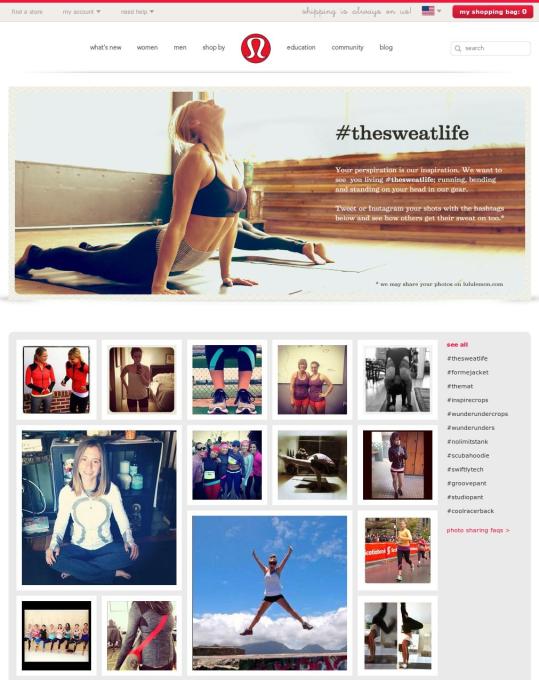
Usually, commercial websites are integrated with various backend features available. But, functionality is not enough to keep visitors coming back as every other website offers the same experience to them.
By including a social wall in a website, brands can stand out in terms of both functionality and aesthetics.
The picturesque appeal of social media UGC on the website will get the visitors hooked, which would decrease the bounce rate. Also, having picture-video content on the website ups ranking in Google search. This will ensure substantial traffic generation and enhanced SEO rates.
For a business to thrive in present times, its website and social media should go together to achieve excellent audience reach. Linking social walls and websites gives users ease of switching from website to social media and vice versa.
Also, by having a social media feed over the landing page, brands can efficiently market their products through UGC and drive higher conversions.
3. Digital Signages
Billboard ads do not attract people anymore. On the other hand, one cannot move ahead without glancing over virtual ad screens known as Digital Signages.
But after some time, the same virtual screen started to lose its engaging factor as it has nothing new to offer to people.
Grabbing consumers’ attention is hard and keeping it is harder. Businesses could save digital signages from meeting the same fate as billboard ads by displaying interactive social wall on it.
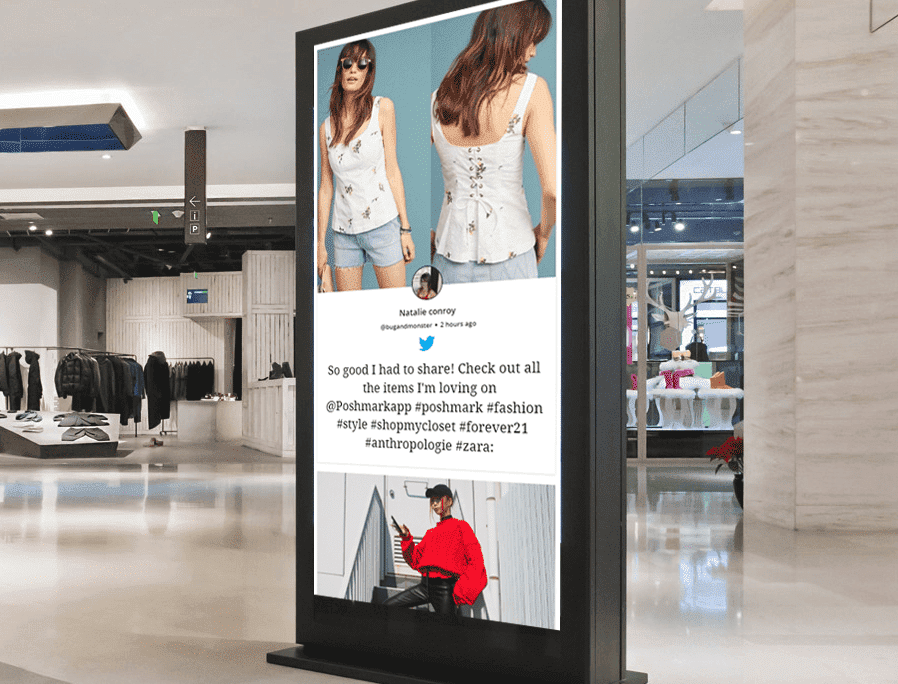
Through social media digital feed, brands can not only intrigue their user but also involve them in their marketing activities.
By constantly updating the digital signage content from social media channels, brands can sway new users to tweet or post an Instagram picture about their brand experience.
Because who doesn’t want to be featured in a digital display and have a moment of fame?
The user-generated content on social wall digital signage and brands using social media content for user engagement is a continuous loop.
While brands get free word-of-mouth marketing as soon as a buyer posts about their products on his/her social media, buyers get validation when his/her post appears on the screen in real-time, and they engage more.
Additionally, when buyers see user-generated images of real people like them being played on digital signage, they feel confident about buying the product, which shoots up in-store sales.
Apart from displaying UGC, Digital signages can also be commercialized by using it as a virtual product catalog, as shoppable screens, or upselling the products at brick-and-mortar outlets.
There is no end to several ways social media digital signages can be used in offline marketing. All marketers need is to think outside the box!
4. Email
Email is the most promising marketing channel that is often overlooked by marketers, given the lack of innovative ideas.
This often leads to spamming business marketing emails straight away for no one has the time to read plain-textual emails anymore!
But, who would have thought that combining social media feed in emails could vamp up otherwise dull marketing campaigns!
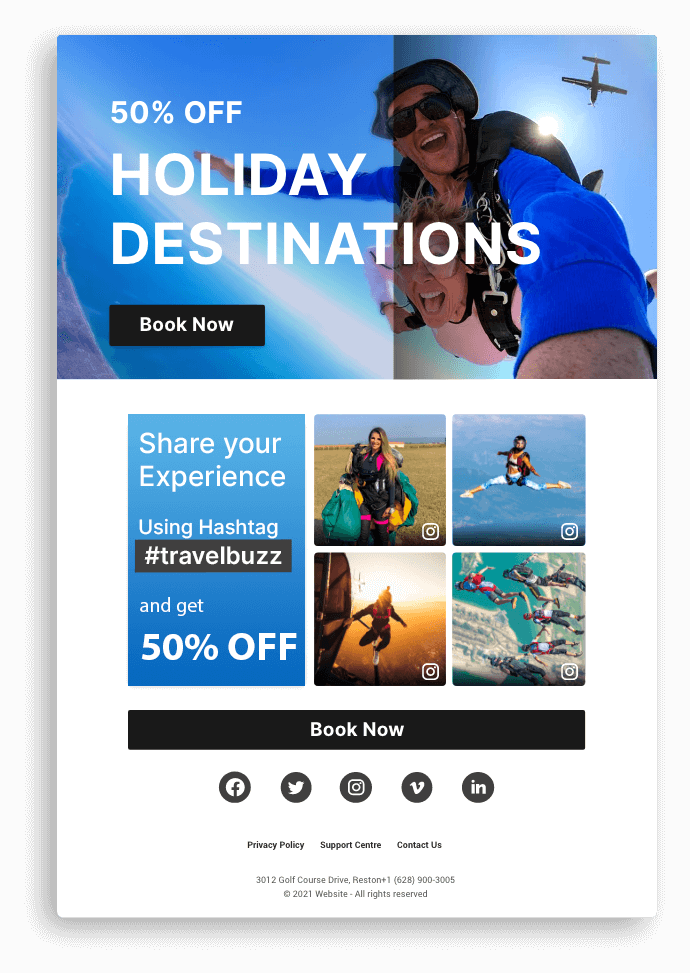
When it comes to audience reach and driving traffic, emails are unparalleled, and no one does user engagement better than social media channels. So, when put together, brands secure the best of both worlds and amp up conversion rates.
Consumers will be amazed when they will see a live social media feed in their emails. The dynamic content in emails will be fetched through a social media aggregator tool and is refreshed every time a user opens the email.
Something that users do not want to skip or spam!
This is also a great way to show that a brand is not a one-time wonder in terms of customer satisfaction and delivers results every time which builds brand trust.
Such kind of creative email marketing will encourage the new users to dig more about a business on social media, enquire about the products and eventually be a part of a brand niche following!
A Quick Run Down
User-generated content is marketing gold. However, as gold needs to be mined out, in the same way, brands have to curate the right UGC across different channels.
Effective social media aggregation ensures the best use of user-generated content in the form of Social walls. Many UGC social wall aggregator tools support brand marketing through easy curation and personalization of user-generated content.
If leveraged smartly, social media feeds can give a brand an edge over its competitors in terms of brand visibility and brand reach. It’s a great way to strengthen brand-consumer connections without putting a strain on content creation costs and subsequently reap high revenues.

